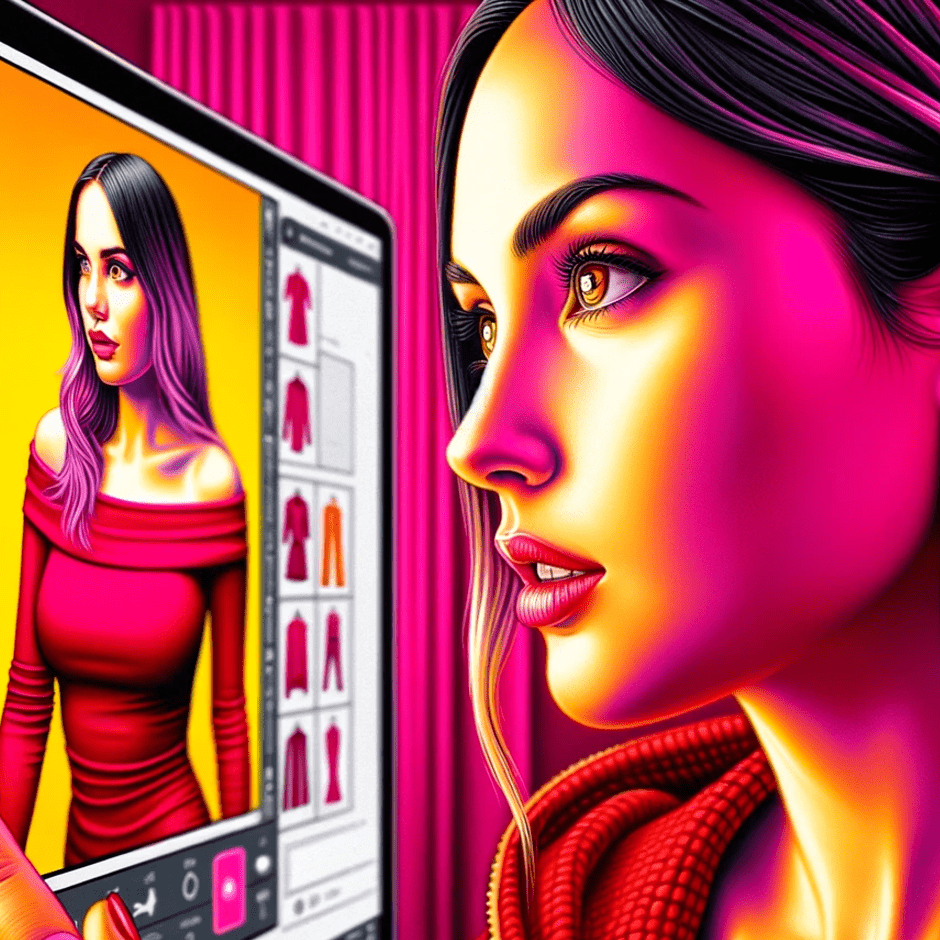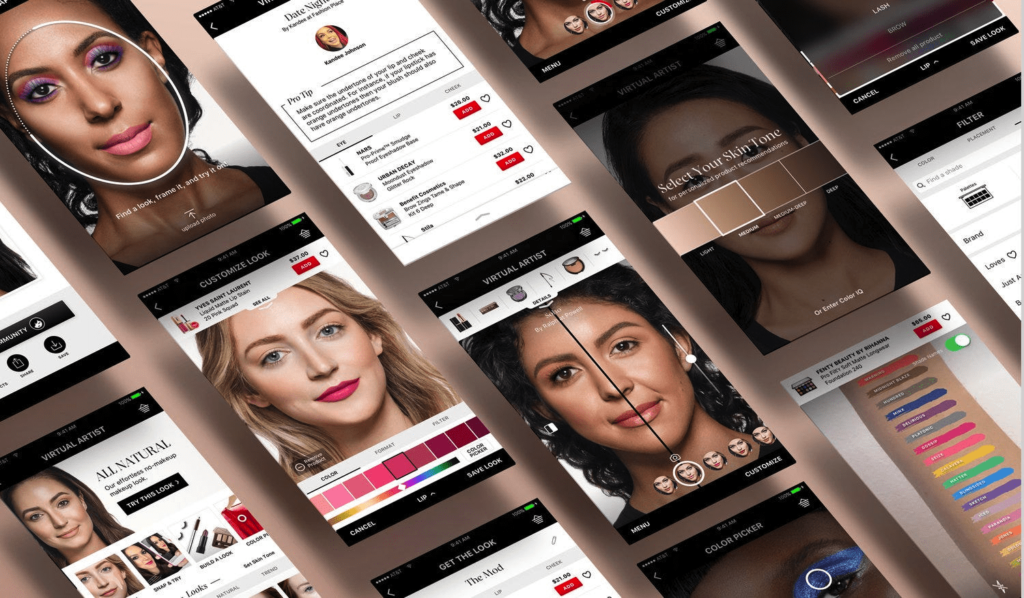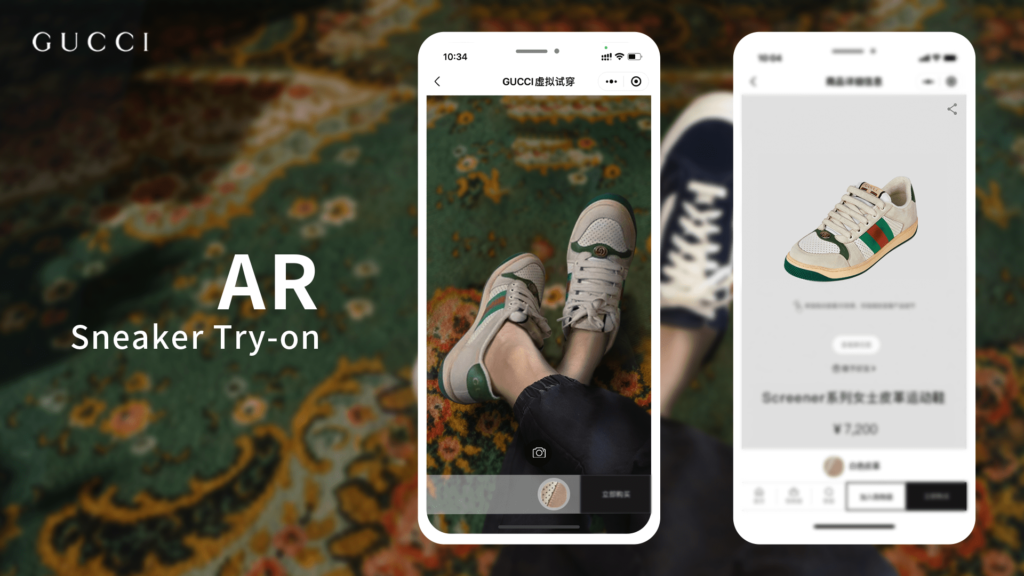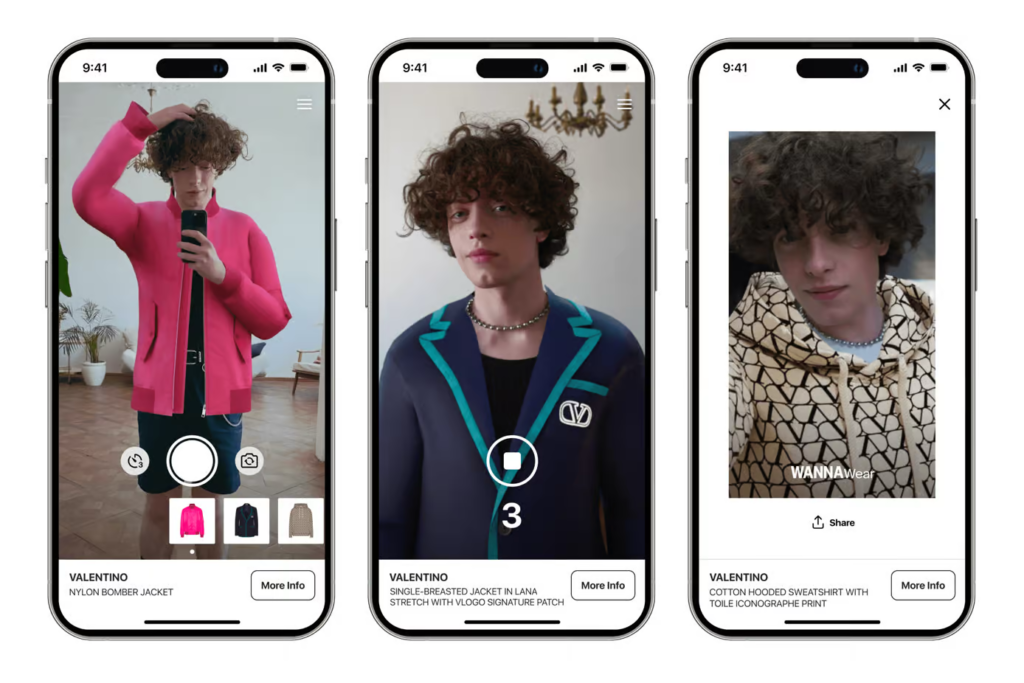
Using Digital Twins to Market Fashion
The latest advancements in AI, VR and AR converge to finally make Virtual Try-Ons compelling to consumers reluctant to purchase apparel online.
The global apparel market is projected to reach $1.79 trillion in 2024 with a 2.87% year-over-year surge. However, only a fraction, less than 42% ($745.4 billion), is transacted online, as offline shopping maintains its allure.
I do most of my clothes shopping online. I have for years. I started by staying loyal to brands I had already purchased in stores, those where I had a high degree of confidence in fit and quality. I also became an early advocate of online men’s clothing pioneer, Mr. Porter. But among my friends and family, I’m still in the minority. Most people prefer to shop for clothing the old-fashioned way: visiting stores. And I get it. Buying fashion online is not as simple as ordering consumer gadgets or kitchen supplies.
Proper fit and sizing are among the most persistent concerns for shoppers reluctant to purchase apparel online. To many, the comfort of selecting the right size is found only within the walls of brick-and-mortar stores, despite the indignity of many retail fitting rooms.
There’s also the palpable attraction of touching, feeling, and trying on garments that prevents many consumers from fully embracing the digital catwalk. The tactile dance with fabric, fit, and quality in physical stores has thus far been unmatched by virtual endeavors. What’s more, in-store sanctuaries offer the luxury of personalized services, from professional advice to in-store tailoring, to customization — a bespoke haven that has previously eluded the digital realm.
For some, the joy lies in the shopping experience itself: the unplanned journey through physical stores, discovering styles and trends spontaneously. The tangible presence of garments fosters serendipitous encounters and allows visualizing how pieces harmonize. For some, shopping for attire is often a social affair, with friends and family joining the retail expedition. The camaraderie of physical stores forms a social nexus absent in solitary clicks of online transactions.
And, of course, offline shopping provides immediate gratification, eclipsing the anticipation and wait synonymous with online deliveries. Also, the perceived inconvenience of return shipping nudges consumers toward the simplicity of returning items to a physical store.
Amidst these challenges, Virtual Try-On (VTO) technology emerges as a beacon of change, a digital tide ready to reshape the narrative of online fashion shopping. As we explore the development of VTO and Digital Twins (an accurate counterpart of the shopper) in fashion retail, a new chapter unfolds – one where the boundaries between the tangible and virtual are blurred.
The Rise of Virtual Try-On Technology (VTO)
VTO technology was first introduced over a decade ago and found some early favor in home décor via brands like IKEA. But for apparel it was very rudimentary…sort of like sticking a picture of your desired clothing to a mirror. But modern VTO is causing a bit of a revolution, enabling consumers to virtually try on clothing and accessories through the seamless integration and convergence of new technologies.
Augmented Reality (AR) overlays digital elements onto the real world, enhancing the visual experience. Virtual Reality (VR) transports users to entirely digital environments, creating a simulated reality. Artificial Intelligence (AI) adds a cognitive layer, adapting and personalizing the virtual try-on experience based on individual preferences. This amalgamation signifies a technological trifecta, elevating VTO beyond a mere gimmick to a transformative tool in the fashion industry.
Fueling the advance of VTO are recent strides in computing power and 3D software capabilities. The computational muscle behind VTO ensures more realistic and accurate representations, capturing nuances of fabric texture, fit, and color. This synergy of technology enables a sophisticated virtual experience, bringing consumers closer to the tactile encounters traditionally reserved for trips to department stores and boutiques.
Benefits of Virtual Try-On Technology
For Marketers, VTO isn’t just a futuristic add-on. It’s a strategic game-changer that redefines the metrics of success in the fashion retail landscape.
The introduction of VTO into the online shopping realm transforms clicks into purchases, with a staggering 94% higher conversion rate for products enriched with VTO features compared to static counterparts. Consumers, armed with the ability to virtually test products, find themselves more inclined to complete the purchase journey.
VTO serves as a robust solution, potentially reducing return rates by up to 25%. By providing customers with a realistic preview of how a garment fits and looks, brands mitigate the guessing game associated with online shopping, fostering confidence and reducing the likelihood of returns.
By offering an interactive, personalized experience, brands also forge stronger connections with customers. The immersive nature of virtual try-ons creates memorable moments, enhancing brand loyalty and establishing a deeper rapport between consumers and the retailer or fashion label.
Perhaps most powerfully, brands leveraging this technology gain access to invaluable data regarding customer preferences, popular styles, and emerging trends. This intelligence equips them to fine-tune their offerings and tailor their marketing, ensuring they align seamlessly with evolving consumer demands.
Embracing VTO isn’t just about pixels and screens; it’s a savvy business and financial move. As competitors grapple with conventional strategies, those brands first to incorporate VTO enjoy a distinct advantage, setting themselves apart in the competitive fashion landscape as pioneers in enhancing the online shopping experience. And by reducing the dependency on physical inventory and store space, brands streamline operations and trim associated costs. The virtual realm becomes an extension of the brand’s storefront, eliminating the need for expansive physical spaces and hefty inventory investments.
VTO also catapults brands into the global arena, breaking down barriers and fostering inclusivity. With virtual try-ons accessible to anyone with an internet connection, even the smallest brands can reach a diverse, global audience, from bustling urban centers to remote corners of the world.
Real-world Examples of Virtual Try-On Technology
VTO has a long way to go before it becomes pervasive. But it is gaining traction. Virtual try-ons are popular among 14 percent of German online shoppers, 12 percent in U.S. and 8 percent in France. VTO transcends the theoretical, reshaping the way consumers experience and interact with fashion and beauty products.

Sephora Virtual Artist: Sephora elevates the makeup shopping experience with Virtual Artist, allowing customers to virtually try on an extensive range of beauty products. This results in a significant boost in customer engagement and sales, proving that VTO isn’t reserved solely for clothing.
Warby Parker’s Virtual Try-On: Warby Parker’s Virtual Try-On feature enables customers to virtually wear different eyeglass frames before making a purchase. This enhances customer satisfaction and serves as a practical solution to the age-old dilemma of choosing the perfect pair of glasses online.

Gucci’s Virtual Try-On for Sneakers: Even luxury brands like Gucci recognize the allure of VTO. Gucci’s Virtual Try-On for sneakers allows customers to visualize how high-end sneakers complement their style, bridging the gap between in-store opulence and online convenience.

Maison Valentino’s Autumn Menswear Collection: Italian label Maison Valentino is among the first luxury brands to introduce virtual try-on (VTO) for a curated selection of menswear pieces from its most recent Autumn 2023 ready-to-wear collections via a pilot project with the help of the augmented reality app, Wanna (owned by online retailer, Farfetch).
These real-world examples underscore the versatility of VTO technology, demonstrating its seamless integration across diverse product categories.
Incorporating Digital Twins in Fashion Marketing
Acknowledging that over 24% of online apparel orders are returned, VTO significantly reduces return rates, alleviating the environmental impact and cost burden associated with returns. Brands like Yoox Net-a-Porter align with sustainability goals by utilizing VTO to contribute to a more eco-conscious approach.
Digital Twins has emerged as the catalyst for a highly personalized and accurate representation of products in the online realm. More than a virtual mirror for customers, Digital Twins enable an informed and confident decision-making process.
Yoox Net-a-Porter’s venture into VTO takes a personalized turn with Mr Porter’s Virtual Try-On Experience for their house brand, Mr P. This innovative tool enhances customer experience and tackles the challenge of returns by focusing on size and fit issues.
The French fashion house, Balmain, delves into VTO to mirror its unique designs in the digital space. Balmain’s testing of Virtual Fitting and Styling is a strategic move to reduce returns and elevate the online shopping experience by allowing customers to virtually try on and style Balmain creations.
The wave of innovation spurred by VTO and Digital Twins extends to various industry players experimenting with similar technologies. From Khaite and Canada Goose to John Lewis, Macy’s, and Dapper Boi, brands and retailers actively explore the integration of Digital Twins to enhance the online shopping experience. This collective exploration signals a broader industry shift toward a more dynamic and personalized future in fashion retail.
Challenges, Considerations & Trends
In the realm of VTO, the fidelity and accuracy of digital twins are pivotal. Brands deploying digital twins must create avatars that faithfully represent consumers’ unique body shapes and sizes to ensure the virtual try-on experience aligns with expectations.
However, this integration of VTO introduces a nuanced landscape of customer hesitation and data privacy concerns. Addressing apprehensions surrounding data privacy is crucial, and fashion retailers must establish transparent practices to assure consumers that their personal data is handled with care and adherence to privacy and data protection regulations.
The fashion industry faces the delicate task of balancing incremental change with widespread adoption of VTO technology. Strategic implementation and gradual adoption allow the industry to glean insights, address challenges, and refine the overall virtual try-on experience.
The evolution of VTO is an ongoing journey marked by continuous innovation and refinement. Anticipate more realistic and immersive virtual experiences as technology advances, promising a future where the virtual and physical realms seamlessly converge.
Major retailers and brands shape the trajectory of VTO technology. Their success stories become benchmarks, accelerating adoption and setting industry standards, propelling the technology into the mainstream.
The potential normalization of VTO technology hinges on the integration of emerging technologies. From advancements in AI to exploring extended reality (XR), the future of VTO is linked with cutting-edge innovations, making it an integral and commonplace aspect of the online fashion retail landscape.
In this convergence of physical and virtual realms, adopting Virtual Try-On isn’t merely an option; it’s an imperative for those envisioning a future where innovation and customer engagement harmonize. The digital twin, once a novel concept, stands as a potent force shaping the next chapter of online fashion retail – a chapter marked by immersion, personalization, and the further fusion of our physical and digital worlds.
Source: Statista



